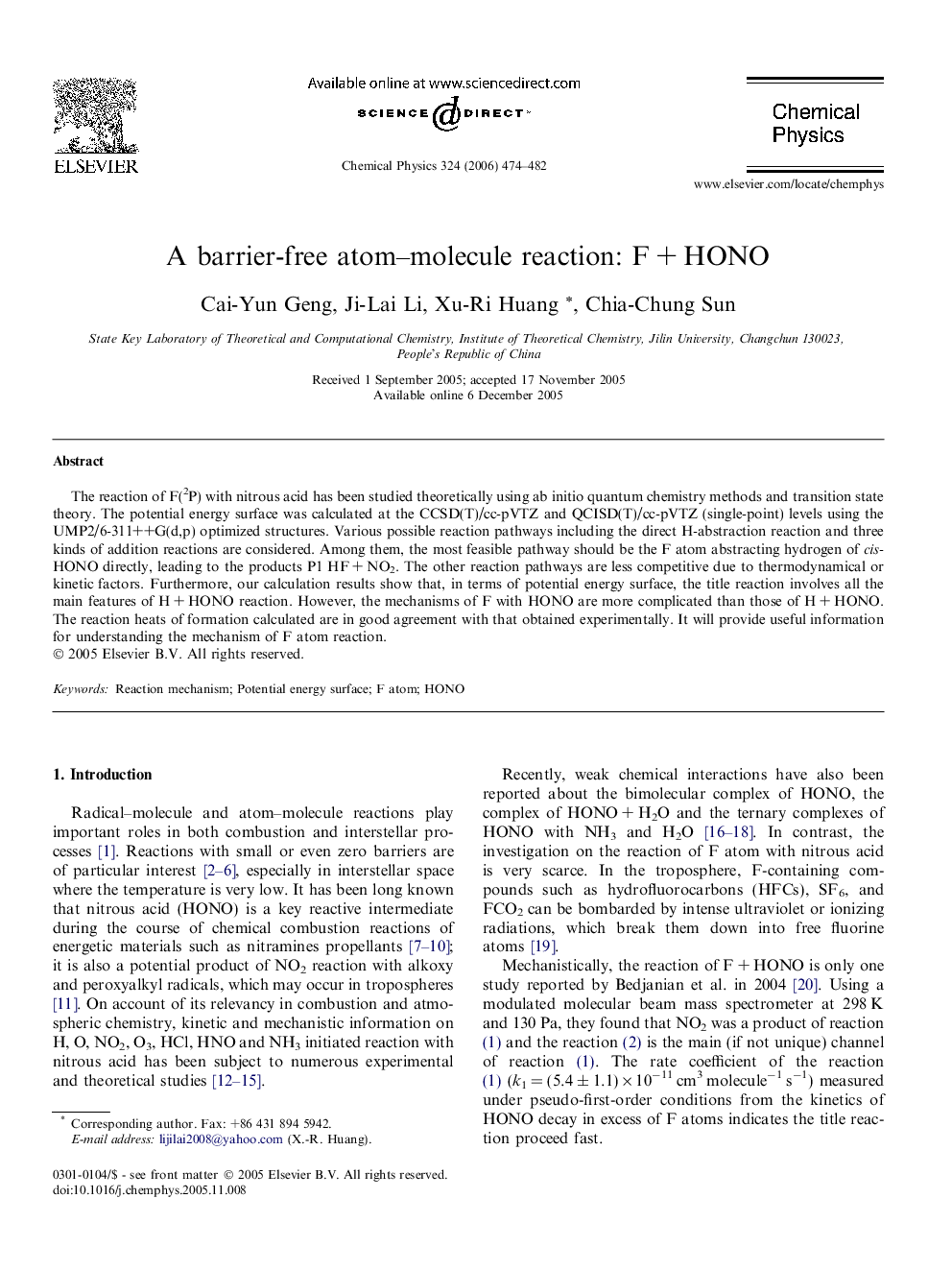| Article ID | Journal | Published Year | Pages | File Type |
|---|---|---|---|---|
| 5377212 | Chemical Physics | 2006 | 9 Pages |
Abstract
The reaction of F(2P) with nitrous acid has been studied theoretically using ab initio quantum chemistry methods and transition state theory. The potential energy surface was calculated at the CCSD(T)/cc-pVTZ and QCISD(T)/cc-pVTZ (single-point) levels using the UMP2/6-311++G(d,p) optimized structures. Various possible reaction pathways including the direct H-abstraction reaction and three kinds of addition reactions are considered. Among them, the most feasible pathway should be the F atom abstracting hydrogen of cis-HONO directly, leading to the products P1 HFÂ +Â NO2. The other reaction pathways are less competitive due to thermodynamical or kinetic factors. Furthermore, our calculation results show that, in terms of potential energy surface, the title reaction involves all the main features of HÂ +Â HONO reaction. However, the mechanisms of F with HONO are more complicated than those of HÂ +Â HONO. The reaction heats of formation calculated are in good agreement with that obtained experimentally. It will provide useful information for understanding the mechanism of F atom reaction.
Related Topics
Physical Sciences and Engineering
Chemistry
Physical and Theoretical Chemistry
Authors
Cai-Yun Geng, Ji-Lai Li, Xu-Ri Huang, Chia-Chung Sun,
